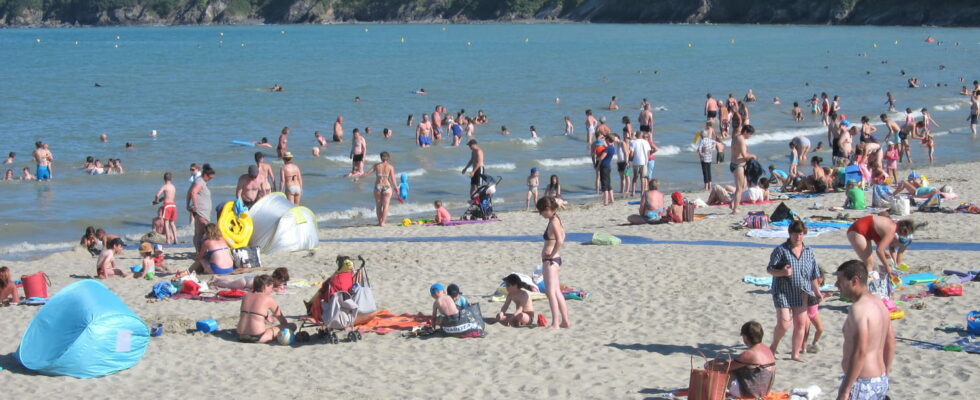5% of beaches should be avoided in France.
While some have already been able to take a dip, others are eagerly awaiting their vacation to take a dip. The good news is that “we can swim safely on 80% of French beaches“, rejoices the environmental association Eau et Rivières de Bretagne which has published a study on the quality of bathing water based on samples taken by the Regional Health Agencies. On the other hand, at the risk of spoiling the pleasure of some holidaymakers, “One in five French beaches is regularly polluted by bacteria and 5% of them should be avoided“.
Monitoring the quality of bathing water has been mandatory since 1976: it covers all sea and freshwater bathing sites where bathing is not permanently prohibited and where there are a lot of people.It is essentially a control of microbiological quality, determined through the 2 regulated bacterial indicators: Escherichia coli and intestinal enterococci, explains ARS Bretagne on his website. Their presence in water can be associated with that of more dangerous pathogenic germs. The risk of infection associated with swimming in water of poor microbiological quality mainly results in gastroenteritis, ear infections, and dermatitis. Specific microbiological risks also exist in fresh water, such as leptospirosis for example.“, a bacterial illness that causes fever, headache, nausea, diarrhea, muscle aches, rash, and eye infection.
To help holidaymakers see things more clearly, the association has published a map which can be viewed online on the website labelleplage.fr on which are listed the 1,854 beaches in France and Corsica depending on the quality of their bathing water analyzed by the Regional Health Agencies (8 to 14 analyses per beach during the summer season). Each beach is associated with a blue, green, orange or red circle, corresponding to the level of the bathing recommendation:
► 755 beaches (or 41%) are “recommended“, located by a blue dot
► 690 beaches (37%) are “low risk“, located by a green dot
► 316 beaches (17%) are “not recommended“, located by an orange dot
► 93 beaches (5%) are “to avoid“, located by a red dot
According to the survey provided by the association, the worst-ranked beaches are located in the Alpes-Maritimes, the North, Pas-de-Calais, Calvados and the north coast of Brittany where “At the end of the 2023 season, 11 sites are classified as insufficient quality“, reports ARS Bretagne. Among the most contaminated, we find the beaches of Landunvez (Finistère), Boulogne-sur-Mer (Pas-de-Calais) or Saint-Laurent-du-Var (Alpes-Maritimes) at the bottom of the ranking.
The best-ranked beaches are located on the Atlantic coast, in Occitanie and Corsica, with the beaches of Lège-Cap-Ferret (Gironde), Palavas-les-Flots (Hérault) and Etel (Morbihan) at the top of the ranking.
Without giving in to psychosis, it is important to be vigilant, especially with young children who are more at risk.If you are an adult between 20 and 60 years old, not immuno-deficient, the risk of gastroenteritis is very low. […] avoid drinking sea water, even unintentionally, insists the association. Swimming in a risky beach is a personal choice; but to be able to do it with full knowledge of the facts, you need information: we do not claim to decide for you, just to give you the elements to choose“.
